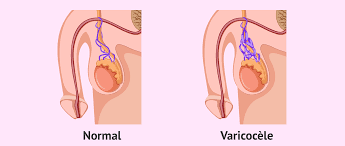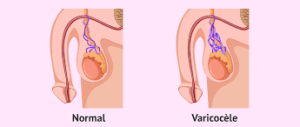
Varicocele: definition, causes, treatments
Varicocele: definition, causes, treatments. All about varicocele disease
All about varicocele disease. Varicocele is a common and mostly benign condition that can affect men of any age. Because its incidence is even higher in men with fertility problems, it could have an impact on fertility. Click here to join us
What is a varicocele?
Varicocele is a dilated vein in the spermatic cord. Also in a fibrous cord located in the bursa above each testicle, connecting each to the scrotum.
Varicocele usually affects only one side. Mostly the left side because of the anatomy of the venous network of the male genital organs. On the left side, blood from the testicle is drained to the renal vein, whereas on the right side it is drained to the vena cava, where the pressure is lower than in the renal vein. Click here
Please visite our website http://l.rezeptbio.com et http://ewebio.com
Causes of varicocele. All about varicocele disease
The exact pathophysiology of varicocele is not known. It is not really known except for a malfunction of the one-way valves that allow the flow of blood from the testicles to the heart. In the case of a varicocele, for reasons still unknown, one of the valves does not function properly. The venous blood flows back, accumulates and causes the veins in the spermatic cord to dilate.
Prevalence
With 15% of the adult male population affected, varicocele is a relatively common condition that can occur at any age.
varicocel, varicoce vein, symptoms, remedy
Varicocele has no consequences on erectile function and sexuality, and in some men, it does not cause any discomfort or complications.
When it is large, it can cause a feeling of heaviness, even pain, which may increase over time. It can also have consequences on the development and functioning of the testicle with testicular atrophy and fertility problems. Indeed, the figures suggest an impact of varicocele on fertility. The 35% of men affected by primary infertility have a varicocele, 80% in the case of secondary infertility, compared to only 15% in the general population (2).
However, the link between varicocele and infertility is not confirmed and the possible mechanisms involved are not elucidated. However, several hypotheses have been put forward: varicose veins could cause, through blood stagnation, a warming of the testicle which is harmful to spermatogenesis. Poor venous return could also lead to stagnation of toxic substances, such as those from tobacco, in the bloodstream, with an impact on spermatogenesis. The reflux of adrenal and renal metabolites could also affect sperm production.
It should be noted, however, that a man with a varicocele may also have no fertility problems.
The symptoms of varicocele. All about varicocele disease
Most often, varicocele is asymptomatic and does not cause any discomfort. It remains unrecognized, or is discovered fortuitously or during a fertility test.
Sometimes the varicocele is manifested by an increase in the volume of the testicle, a feeling of heaviness in the bursa, or even pain when standing for a long time, during physical effort or in hot weather.
Diagnosis
The diagnosis is clinical: by palpation and visual examination, the urologist looks for varicose dilatations above the testicles. In case of doubt, an ultrasound is performed to confirm the presence of the varicocele and to rule out any other pathology (inguinal hernia, spermatic cord cyst, effusion of liquid in the bursa, testicular tumor…). The images will show abnormally large veins and blood stagnation.
For a couple experiencing difficulties in having a baby, during the infertility assessment for the man, the doctor systematically performs a clinical examination to detect a possible varicocele.
Treatment and prevention. All about varicocele disease
If the varicocele is not very developed. It does not cause any discomfort, therapeutic abstention is recommended.
In case of fertility problems, the links between varicocele and hypofertility are not confirmed and there is a debate on the necessity to treat or not the varicocele. However, there seems to be a consensus that in case of clear varicocele associated with spermogram abnormalities, treatment of the varicocele is recommended.
This treatment consists of occluding the dilated spermatic vein, generally by embolization: under local anesthesia and ultrasound control, a small catheter is introduced into the femoral artery to the dilated spermatic veins. Substances are then injected to permanently block the vein. These may be sclerosing blocking agents and/or small metal springs. The operation can be performed on an outpatient basis. Surgical treatment is much rarer today.
In more than half of the cases, this intervention would allow to improve the quality recommended before the intervention, reminds however the French Association of Urology (4).
To date, there is no treatment or precaution that can prevent the appearance of a varicocele.

